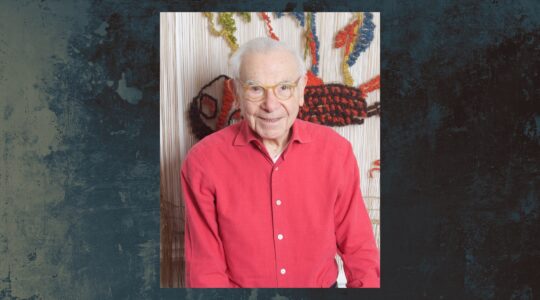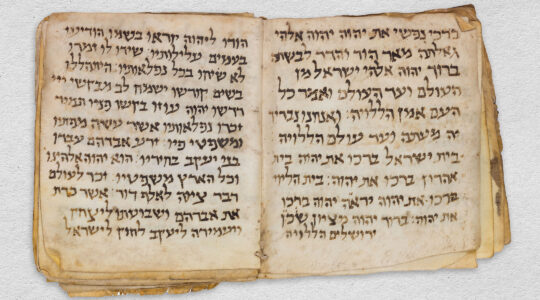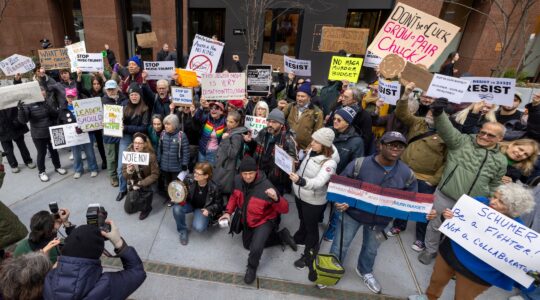The Jewish population in the Washington Heights/Inwood communities on the northern tip of Manhattan has soared by 144 percent since 2002, while Suffolk County, with a 4 percent decrease in Jews during that time, is the only suburban county in the region to experience a Jewish population loss.
Those were among the findings released last week by UJA-Federation of New York, based upon its 2011 Jewish Community Study of New York. These findings focused on 30 distinct communities in the city, Westchester County and Long Island where 75 percent of the New York Jewish community lives.
It found that four (the Upper West Side of Manhattan, Borough Park, Williamsburg and the Flatbush/Midwood/Kensington areas of Brooklyn) would each qualify as among the 20 largest Jewish communities in the country.
Pearl Beck, the lead author of the study, said there are “more Jews in Flatbush/Midwood/Kensington than in Baltimore, and there are as many Jewish households on Manhattan’s Upper West Side as there are Jews in Cleveland.”
And the study found that 10 of the areas are collectively home to nearly half of the Jews in the New York metropolitan area.
The survey, based on interviews with 6,000 self-identified Jews in 2011, found that the Jewish population in the Bronx, which had plummeted 45 percent from 1991 to 2002, increased 20 percent in the last nine years. It found also that Brooklyn has enjoyed a steady increase of Jews over the years, growing from 371,000 in 1991 to 561,000 in 2011. Two Brooklyn neighborhoods — Williamsburg and Borough Park — account for two-thirds of the population increase in the eight-county New York metropolitan area. And five of the seven lowest income areas in the region are in Brooklyn.
Those areas were just two of 17 that experienced Jewish population growth. Among the others were Forest Hills/Rego Park/Kew Gardens in Queens, South Central Westchester, and the Commack/East Northport/Huntington area of Suffolk County.
When the initial findings of the 2011 population study were released last year, a highlight was that the Jewish population here had increased 9 percent since 2002.
“Everyone associated it with the huge birth rate of the Orthodox,” Beck said. “What we found [upon further analysis] was that other [non-Orthodox Jewish] areas also grew, such as Washington Heights, which grew by 144 percent. In 2002, Washington Heights wasn’t even one of our primary areas [of Jewish concentration]. Young, single people in their 20s and 30s have moved there, and we have upgraded it to one of our areas of Jewish population concentration. The area looks quite different [from other areas of Jewish concentration] because it has relatively few children.”
The study found that chasidic Orthodox Jews are concentrated in a few neighborhoods in Brooklyn and that Modern Orthodox Jews are spread out across the metropolitan area. And although the Conservative and Reform movements have lost adherents since 2002, they do have pockets of strength.
Nassau County has the highest concentration of Conservative Jews — in Roslyn, at least 30 percent of those Jews surveyed identify with the movement. Similar findings were recorded in Flushing and Kew Gardens Hills, Queens.
The Reform movement is strong in areas of Westchester, Nassau and Suffolk; on the Upper East Side of Manhattan fully 40 percent of respondents said they identify with it.
However, Leonard Saxe, director of Brandeis University’s Cohen Center for Modern Jewish Studies, has questioned the survey’s methodologies. When it was first released last year, Saxe, a social psychologist, said its finding that about one-third of the 1.54 million Jews in the eight counties are Orthodox is an overestimation, contradicting data reported by the Avi Chai Foundation in 2009 that provided the number of Orthodox children in day schools. The authors of the study, however, insisted that the “main contours of our findings are correct.”
Saxe declined to comment on the geographic study.
The new geographic study reported the following other findings:
♦ In Manhattan, the proportion of Jews who identify as Conservative dropped from 26 percent to 17 percent in the last nine years while the percentage of Reform Jews dropped from 35 percent to 28 percent. At the same time, those who characterize themselves as secular or having no religion soared from 12 percent in 2002 to 32 percent in 2011. Another 15 percent said they were nondenominational or “just Jewish.”
“Manhattan’s level of Jewish connection and identification in 2011 is lower than its 2002 levels and also generally lower than the overall eight-county 2011 levels,” the study said.
♦ Although much of the northern half of Manhattan has witnessed an increase in Jews, the Upper East Side and Manhattan below 60th Street, experienced a decrease overall despite growth in pockets like Tribeca, Soho and Battery Park City.
♦ In Queens, the Jewish population growth has been primarily among baby boomers 45 to 64 years old. But the county is also home to the New York area’s third-largest population of Jews 75 and older.
♦ Staten Island’s Jewish population decreased by 19 percent, the largest drop of all eight counties. At the same time, the level of Jewish engagement has increased as has the number of Jewish seniors.
♦ Nassau County, which has seen a 4 percent increase in Jews since 2002, has the highest proportion of married or partnered Jewish households in the metropolitan area. And two of its communities —Great Neck and the Five Towns — are among the most Jewishly engaged areas. They are also the two biggest areas when it comes to contributing to Jewish causes and are among the top three areas regarding travel to Israel.
♦ Two of the areas with the lowest level of Jewish philanthropic giving were Lower Manhattan West and Brownstone Brooklyn — approximately half of the respondents said they volunteer for charitable groups, although not necessarily Jewish ones.
♦ Nassau County demographically represents the most “typical” county of the aggregate: 20 percent of its Jews are under the age of 18, and seniors comprise 21 percent of its population — figures that have remained roughly the same over the past nine years.
♦ On the other hand, Beck pointed out, there is no “typical” Jewish community. Thus, although the overall intermarriage rate for the New York area is 22 percent, in the 30 specific areas examined the rate ranged from 1 percent to 59 percent.
♦ Twice as many Jewish households that include a “’partially Jewish’ or a biracial individual are located outside of the 30 primary areas where Jews live, which makes it difficult for these people to be Jewishly connected,” Beck said.
♦ Nassau has among the wealthiest Jews — 55 percent report incomes of more than $100,000, compared with 30 percent in the overall eight-county area.
♦ Although 41 percent of Suffolk’s Jews report an annual income of more than $100,000, the county has the highest proportion (29 percent) of Jewish households with an annual income of less than $50,000. It also has among the highest intermarriage rates at 39 percent.
♦ The Commack/East Northport/Huntington area, with a 50 percent increase in Jews since 2002, is the third-highest area in terms of the rate of Jewish population growth. Although 74 percent of the people in Jewish households there are married or partnered, fully 16 percent of Jews are divorced or separated — a proportion that is higher than the county as a whole (10 percent) and the overall metro New York rate of 11 percent. Nearly half of the Jews in Suffolk live outside of the more Jewishly populated areas, a fact that Scott Shay, chair of the Jewish Communal Study, said is greater than elsewhere in the region and presents a “challenge to UJA-Federation to figure out the best way to address those communities.”
Asked to explain the slight drop in the percentage of Jews who contribute to UJA-Federation over the last nine years — from 26 percent to 24 percent — Shay replied: “We have to better articulate why a gift to UJA-Federation is so critical, no matter what the size. UJA-Federation is the main address for focusing on [Jewish] communities, for galvanizing a large number of agencies and making sure to address the local [Jewish] population; nobody better than UJA-Federation can do that.”
A perfect example is how UJA-Federation marshaled its resources to deal with Superstorm Sandy, which Beck said affected fully 28 percent or 150,000 Jewish households in the city, Long Island and Westchester. Shay said that because the study was conducted before the storm displaced thousands of families, its data would help “understand the dimensions of the affected population and provide a baseline for understanding the longer-term impact in these areas.” Asked about the population drop in Manhattan below 60th Street, Beck said, “people were surprised to hear that,” but she explained that the survey looked at a large area that includes senior housing and did not zero in on specific neighborhoods that might have seen Jewish growth, such as Tribeca, whose overall population grew in the 2010 census.
Another surprise, Beck said, was finding that the Upper West Side is even more “Jewishly dense” than Brooklyn’s Williamsburg. John Ruskay, executive vice president and CEO of UJA-Federation of New York, pointed out that such a study “is critically important for communal planning.”
“Of the various reports that come out of the Jewish Community Study of New York, the geographic profile is perhaps the most valued by both our beneficiary agencies and other Jewish institutions because the localized data is so important to understand the strengths and needs of the specific populations they are working with day in and day out,” he said.
The New York Jewish Week brings you the stories behind the headlines, keeping you connected to Jewish life in New York. Help sustain the reporting you trust by donating today.




